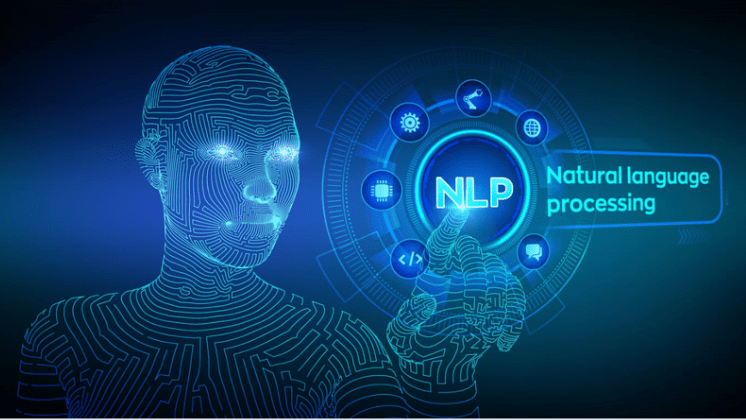Introduction
Natural Language Processing (NLP) is the key to unlocking the potential of Conversational AI, enabling machines to understand, interpret, and respond to human language with precision. NLP combines linguistics, machine learning, and artificial intelligence to create meaningful interactions between humans and machines. Its impact spans industries, transforming how businesses engage with customers and how technology adapts to human needs.
The Evolution of Natural Language Processing
Historical Background
The journey of NLP began in the 1950s, when Alan Turing posed the question, “Can machines think?” This led to early attempts at enabling machines to process language. The development of rule-based systems, where programmers manually encoded grammar rules, marked the first significant step.
In the 1980s, statistical models revolutionized NLP, shifting the focus from hardcoding to using probability and data analysis. By analyzing patterns in large datasets, these models laid the groundwork for machine translation and speech recognition.
The introduction of neural networks in the 2000s and the advent of deep learning in the 2010s brought unparalleled progress. Models like RNNs, LSTMs, and later transformers transformed NLP, making it more robust and scalable.
Modern Innovations
Today, NLP incorporates state-of-the-art techniques like pre-trained transformers, attention mechanisms, and unsupervised learning. Groundbreaking models such as GPT, BERT, T5, and XLNet enable machines to generate human-like text, grasp subtle nuances, and perform diverse linguistic tasks. These advancements empower systems like chatbots, voice assistants, and search engines to offer more natural and engaging experiences.
Key Components of NLP
Tokenization and Parsing
Tokenization is the first step in NLP, where text is broken into smaller units such as words, phrases, or sentences. This process simplifies textual data, making it manageable for machine processing. For instance, a sentence like “Natural Language Processing is fascinating!” might be tokenized into:[‘Natural’, ‘Language’, ‘Processing’, ‘is’, ‘fascinating’, ‘!’].
Parsing involves analyzing sentence structure, creating syntax trees that map out grammatical relationships between words. Parsing helps systems understand context, ensuring accurate interpretation of queries or commands.
Named Entity Recognition (NER)
NER identifies specific entities within text, such as names, dates, locations, or organizations. This is particularly useful in applications like:
- Extracting key information from legal or medical documents.
- Personalizing customer interactions by identifying user preferences.
For example, in the sentence, “Amazon delivered the package to John in New York on July 10,” NER identifies “Amazon” as an organization, “John” as a person, “New York” as a location, and “July 10” as a date.
Sentiment Analysis
Sentiment analysis evaluates the emotions conveyed in a piece of text, classifying it as positive, negative, or neutral. Businesses use sentiment analysis to:
- Monitor customer feedback on social media.
- Identify dissatisfaction in customer service interactions.
- Gauge public sentiment during product launches or campaigns.
For example, analyzing tweets about a new smartphone can reveal whether users are excited, indifferent, or disappointed.
Language Modeling
Language models are the backbone of many NLP applications. They predict the likelihood of word sequences, enabling tasks like text generation, autocomplete, and machine translation. Models like GPT can craft coherent paragraphs or even entire articles, showcasing the power of advanced language modeling.
NLP in Conversational AI
Enhancing User Interactions
Conversational AI systems leverage NLP to interpret user inputs and craft appropriate responses. This involves several key processes:
- Intent recognition: Identifying what the user wants to achieve. For example, “Book a flight to Paris” reflects the intent of making a travel reservation.
- Context understanding: Retaining the flow of multi-turn conversations. A user might say, “What’s the weather like in Tokyo?” followed by “How about New York?” NLP ensures the system understands the shift in context.
- Response generation: Creating replies that feel natural and relevant, ensuring user satisfaction.
Examples in Action
- Customer Support Chatbots: Banks, e-commerce platforms, and telecom companies use NLP-powered chatbots to handle common queries, such as account balance checks or order status updates.
- Voice Assistants: Systems like Google Assistant and Amazon Alexa rely on NLP to process voice commands, enabling users to set reminders, play music, or control smart devices seamlessly.
Applications of NLP Across Industries
Healthcare
The healthcare sector benefits immensely from NLP’s ability to process unstructured data. Examples include:
- Clinical Documentation: NLP tools summarize doctor-patient interactions, reducing administrative workloads.
- Symptom Checkers: Chatbots analyze user descriptions of symptoms to provide initial diagnoses or recommend specialist consultations.
- Drug Research: NLP accelerates drug discovery by analyzing vast amounts of medical literature and clinical trial data.
Finance
Financial institutions harness NLP for automation and insight generation. Applications include:
- Fraud Detection: Identifying unusual patterns in transaction records using NLP-powered anomaly detection.
- Market Analysis: Sentiment analysis of financial news and social media helps predict market trends.
- Customer Support: NLP automates responses to routine queries, improving efficiency and customer satisfaction.
Education
In education, NLP enhances both teaching and learning:
- Language Learning Apps: Tools like Duolingo use NLP to provide instant feedback on grammar and pronunciation.
- Automated Grading: AI systems evaluate essays and assignments, offering detailed feedback to students.
- Personalized Learning: NLP identifies gaps in student knowledge, tailoring lessons to individual needs.
Challenges in NLP
Ambiguity and Context
Human language is rich with ambiguities. Consider the sentence, “I saw her duck.” Without context, “duck” could refer to an action or a bird. Resolving such ambiguities requires advanced models capable of understanding syntax and semantics.
Multilinguality
Developing NLP systems that support multiple languages is complex. Challenges include:
- Low-resource languages: Some languages lack extensive datasets for training models.
- Cultural nuances: Expressions and idioms vary widely, requiring tailored approaches for each language.
Ethical Concerns
NLP systems trained on biased data can inadvertently perpetuate stereotypes. For example, gender biases in job recommendations might occur if training datasets are unbalanced. Addressing these concerns requires diverse datasets and rigorous bias testing.
The Role of Deep Learning in NLP
Neural Networks and Word Embeddings
Neural networks, particularly RNNs and LSTMs, have improved NLP’s ability to process sequential data. Word embeddings like Word2Vec and GloVe capture the meanings of words by representing them as vectors in multi-dimensional space.
Transformers and Attention Mechanisms
Transformers, powered by attention mechanisms, revolutionized NLP by enabling models to focus on relevant parts of text. For example, in machine translation, transformers ensure that the system pays attention to word order and context, improving accuracy.
Pre-trained Models
Pre-trained models like BERT and GPT learn language patterns from massive datasets and can be fine-tuned for specific tasks. This approach significantly reduces the time and resources needed for custom NLP applications.
NLP and the Future of Conversational AI
Multimodal AI
The next generation of conversational AI will combine NLP with computer vision, speech recognition, and even gesture analysis. Imagine a virtual assistant that understands not just your words but also your facial expressions and tone of voice.
Personalization
As NLP advances, conversational AI systems will become more personalized, adapting to individual user preferences and communication styles. This could revolutionize sectors like e-commerce, healthcare, and education.
Real-Time Translation
Real-time language translation is one of NLP’s most exciting frontiers. Systems like Google Translate are continuously improving, bringing us closer to breaking down language barriers in global communication.
FAQs
What is the primary role of NLP in Conversational AI?
NLP enables machines to understand, interpret, and respond to human language, making conversations with AI systems feel natural and meaningful.
How does NLP handle ambiguity in language?
By using context, syntax analysis, and advanced models like transformers, NLP resolves ambiguities and accurately interprets meaning.
What are the challenges in multilingual NLP?
Challenges include limited datasets for low-resource languages, grammatical complexities, and cultural nuances.
Can NLP eliminate biases in AI systems?
While NLP cannot completely eliminate biases, ethical AI practices, diverse datasets, and robust testing can significantly reduce them.
How do pre-trained models benefit NLP applications?
Pre-trained models like GPT and BERT accelerate NLP development by providing general-purpose language understanding, which can be fine-tuned for specific tasks.



